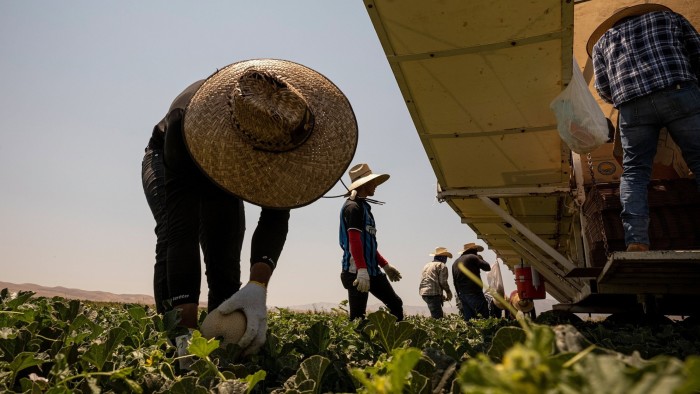Unlock the White House Watch newsletter for free
Your guide to what Trump’s second term means for Washington, business and the world
The writer is chief investment strategist at Charles Schwab
The debate over immigration policy in the US has intensified in recent years, shaped by a complex mix of economic priorities, humanitarian values and national security concerns.
This has led to efforts to strengthen border enforcement and remove immigrants with criminal records. These goals might have political support but shifts in US immigration policy — including a significant decline in legal immigration and a sharp rise in deportations — may have profound economic consequences.
While safeguarding communities is essential, it is important to recognise in a non-political way the economic role that immigrants — both documented and undocumented — play in the US labour force, demographic balance, entrepreneurship and long-term growth potential.
At the core of their economic impact is the labour market. Immigration has accounted for the majority of US labour force growth over the past decade. In March, the Congressional Budget Office, cited lower labour force growth as a factor in a reduction of the economic growth it expected over the next 30 years. If there is an ongoing reduction in net immigration, this would create persistent economic constraints. The shortfall would affect multiple sectors but is especially pronounced in industries that rely heavily on immigrant labour — including construction, services, transportation, leisure and hospitality, manufacturing, and agriculture.
As deportations increase and pathways for new entrants narrow, employers may face heightened difficulty filling positions. This labour scarcity is likely to contribute to wage inflation in lower-skilled service roles; which although beneficial for many workers, also pressures profit margins and contributes to broader inflationary trends.
Declines in immigration have an inflationary effect beyond the wage channel. Fewer workers in logistics, food processing and manufacturing raise input costs throughout the supply chain. Moreover, businesses facing labour shortages may delay or cancel expansion plans, leading to lower capital investment and productivity growth.
Immigration often serves as a complement to native-born labour, filling demographic and skills gaps that would otherwise go unmet. For example, foreign-born STEM (science, technology, engineering and math) workers help sustain the competitiveness of the US tech and biotech sectors. A reduction in their numbers tends to not only diminishes innovation but also reduces productivity gains across the economy.
Immigration also plays a key role in counterbalancing US demographic ageing. A smaller labour force relative to the number of retirees imposes a heavier fiscal burden on Social Security, Medicare and other US age-related entitlements. In contrast, immigrants tend to be younger than the native-born population and more likely to be in their prime working years. They contribute to payroll taxes and often rely less on entitlement programmes. Thus, lower immigration intensifies the fiscal pressures weighing on the federal budget.
Immigrants are also disproportionately entrepreneurial. In April of this year, Axios reported that 60 per cent of the top US-based artificial intelligence companies had at least one immigrant founder.
The reduction in immigrant flows — and the legal uncertainty surrounding many already in the US — may impact new business formation and weaken the county’s competitive innovation edge. Visa programmes for foreign nationals to work or reside in the US have become harder to access or more restricted. Meanwhile, deportation-focused policies have created a chilling effect in immigrant communities, reducing economic participation and consumer spending.
While national economic effects are likely to be significant, regional impacts are even starker. More immigrant-reliant states such as California, Texas and Florida face greater economic disruption. Similarly, smaller communities that have depended on immigrants to sustain population growth and consumer demand are now facing shrinking school enrolments, housing stagnation and local labour shortages.
While immigration policy is often debated through political and cultural lenses, its economic ramifications are becoming clearer: reduced growth potential, tighter labour markets, heightened inflationary pressures and long-term demographic imbalances. Rebuilding an immigration system that aligns with labour market needs, demographic realities and fiscal sustainability is critical to the long-run prosperity of the US.
